SOC Supports Shark Allies and Shark Conservation in Florida
View below or as PDF
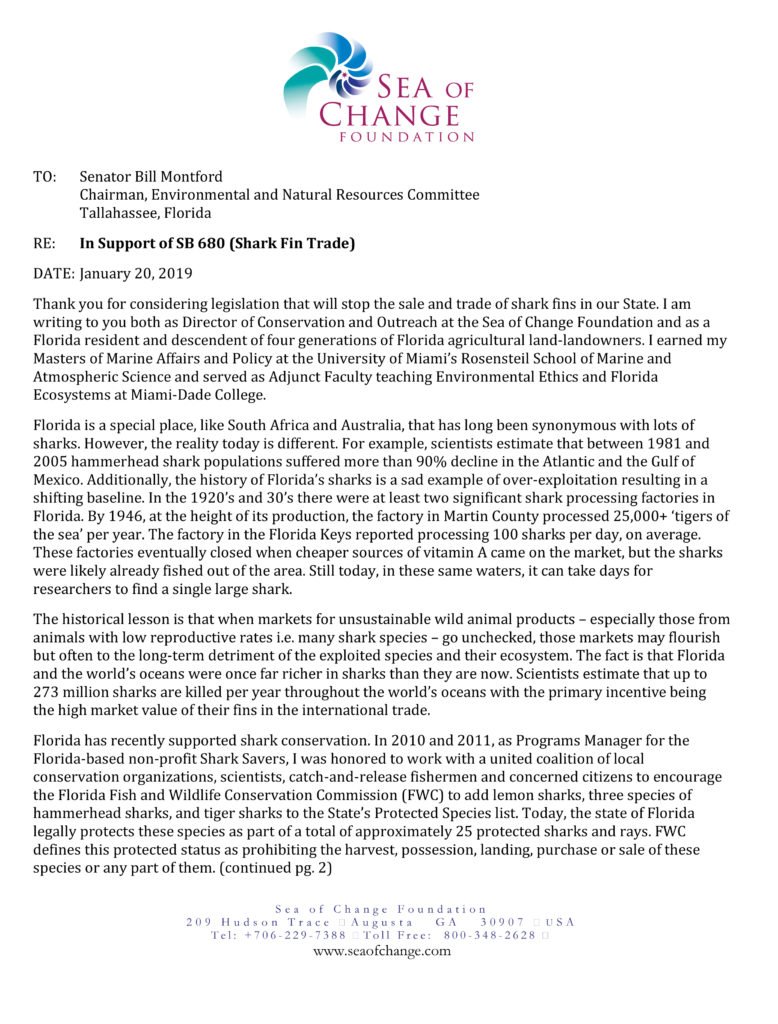
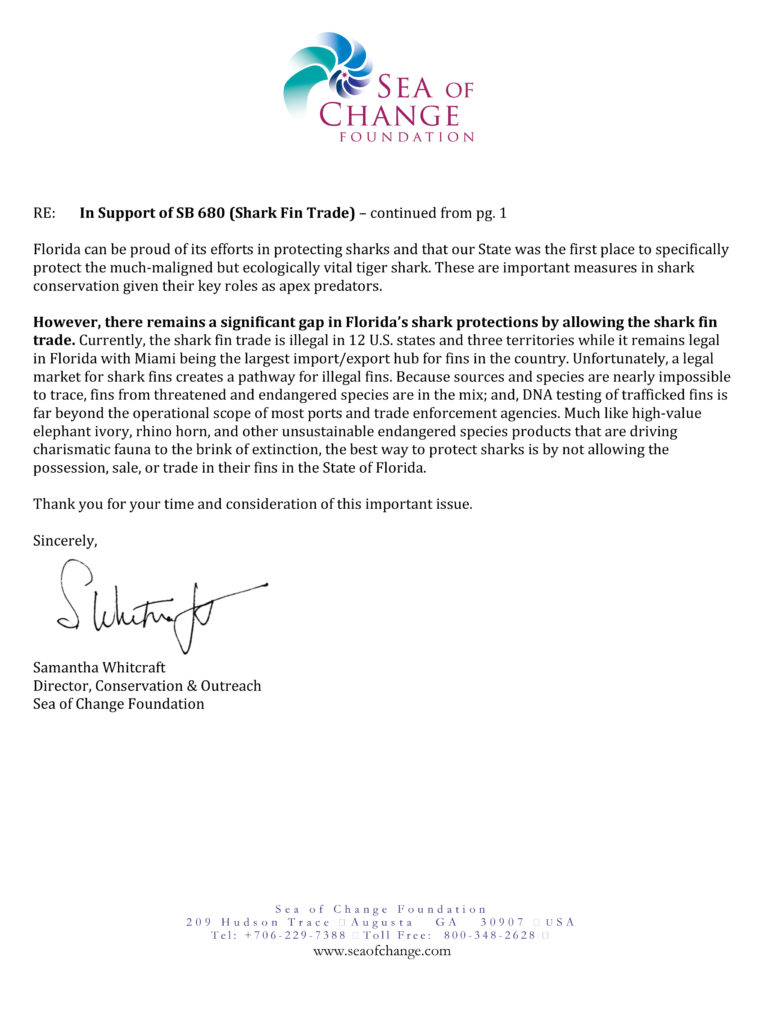
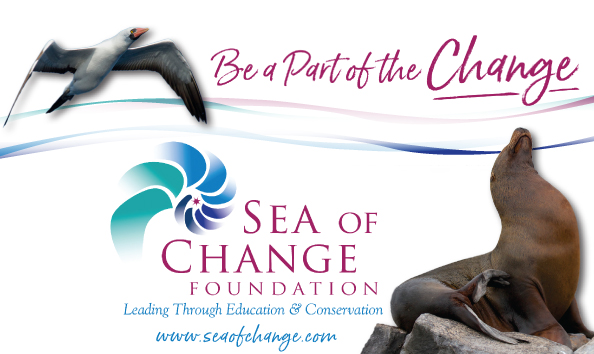
In an on-going effort to support conservation and education, leaders of the adventure travel community will, again, unite in support of the Sea of Change Foundation at this year’s DEMA (Dive Equipment Manufacturers’ Association) show in Orlando, Florida.
he Sea of Change Foundation, along with generous sponsors Aggressor Adventures, SSI, Platinum Pro Foundation, and Mares – is hosting the third annual Coral Reefs Forever Gala beginning at 6:30 p.m., November 14, 2019 in the Orange County Convention Center, room W311E-H.
This “ocean casual” gala event will include complimentary beer and wine, delicious food, a live DJ, dancing, and both a silent and called auction. Outstanding achievements in scuba diving will be recognized via the Platinum Pro Awards along with the Sea of Change Foundation’s annual Lifetime Explorer Award. This year’s recipient is freelance photographer and active proponent of marine conservation issues, Michele Westmorland. “We invite our friends and colleagues from the dive community to join us for what promises to be a great evening in support of an important cause – protecting our natural world!” says Samantha Whitcraft, the Foundation’s Director of Conservation and Outreach.
All funds raised will go directly to support the Sea of Change Foundation’s 2020 conservation projects and scholarships. “With the Sea of Change Foundation, 100% of donations go directly to conservation initiatives around the world to help ensure future generations can also experience the wonders of the natural world,” says founder Wayne Brown, CEO of Aggressor Adventures and Chairman of the Board of Directors of the Foundation.
About the Sea of Change Foundation: The Sea of Change Foundation funds conservation and research initiatives that directly impact the natural world we all love to enjoy and explore. Our mission is to create positive change. Learn more about and support the Sea of Change Foundation, here: www.seaofchange.com.
Octopuses are part of the phylum Mollusca and are grouped in the class Cephalopoda with squids and cuttlefish. They make up the order Octopoda with over 300 species, all living in various habitats from abyssal depths to pelagic waters, to coral reefs, and intertidal zones. They can range in size from the Giant Pacific Octopus (Enteroctopus dofleini) which can weigh up to 33lbs and have an arm span of up to 14ft, to the smallest species, the Star-Sucker Pygmy Octopus (Octopus wolfi), which can weigh less than 1gram and is around 1in in length.
The octopus is bilaterally symmetrical with eight arms, two eyes, three hearts, gills for breathing, one mouth, many suction cups on each arm, and one large brain. In fact, octopuses have the highest brain-to-body mass ratio of all invertebrates and a larger brain than many vertebrates. Their complex nervous system extends to their arms, wherein each contains a nerve cord and can act independently. The suction cups on each arm are equipped with chemoreceptors that allow the octopus to taste whatever it’s touching.
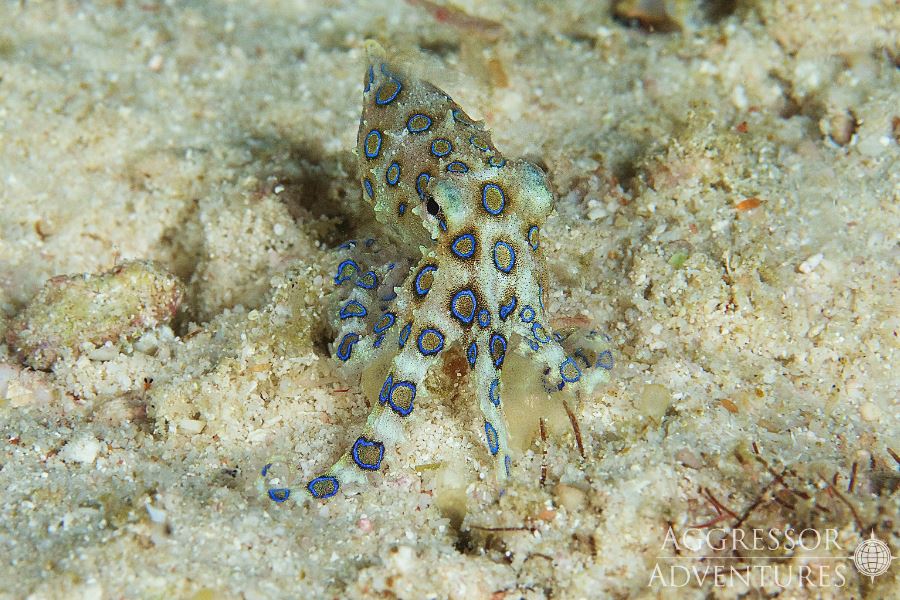
These intelligent animals have been observed to have problem-solving capabilities by successfully navigating mazes using both long-term and short-term memory. They have been trained in laboratory settings to distinguish between different shapes and patterns. Within the aquarium industry, they are known for breaking out of their cages in search of food. Some species have also been observed using coconut shells to build themselves a shelter thus exhibiting tool use. Although intelligent, they learn nothing from their parents, as the male octopus dies shortly after mating and the female dies shortly after her eggs are hatched. They are mainly found alone, except when matting. They are also masters of disguise and use camouflage to avoid predators and when hunting. Their skin is equipped with chromatophores which are specialized cells that allow the octopus to change color and texture to match its surroundings. They can also use their ink sacks to expel a cloud of ink that distracts the predator while the octopus escapes. Known predators on octopuses include sharks, fishes, seabirds, dolphins, sea otters, other cephalopods, and humans.
Octopus is a delicacy in many countries, with the worldwide catch peaking in 2007 at 380,000 tons. Most species are listed as least concern or data deficient on the IUNC Red List, meaning we do not have enough data on their population dynamics. There is much research that needs to be done on these intelligent creatures and many things that we can learn from them. Today, scientist are studying them for their ability to regenerate limbs, the color changing abilities of their skin, their behavioral intelligence, and their distributed nervous system. As our oceans warm and habitats are changing drastically, we may run out of time before we can learn all that we can from octopuses before it’s too late.
We have an extra special edition of Creature Feature to introduce you to our latest conservation project; terrestrial (land) animals!
In keeping with our new expanded mission, terrestrial conservation in addition to marine conservation, the Sea of Change Foundation (SOC) sought an elephant conservation project for funding. After some research, we identified the Sri Lanka Wildlife Conservation Society’s Project Orange Elephant as a worthy conservation project that can lead to positive change.
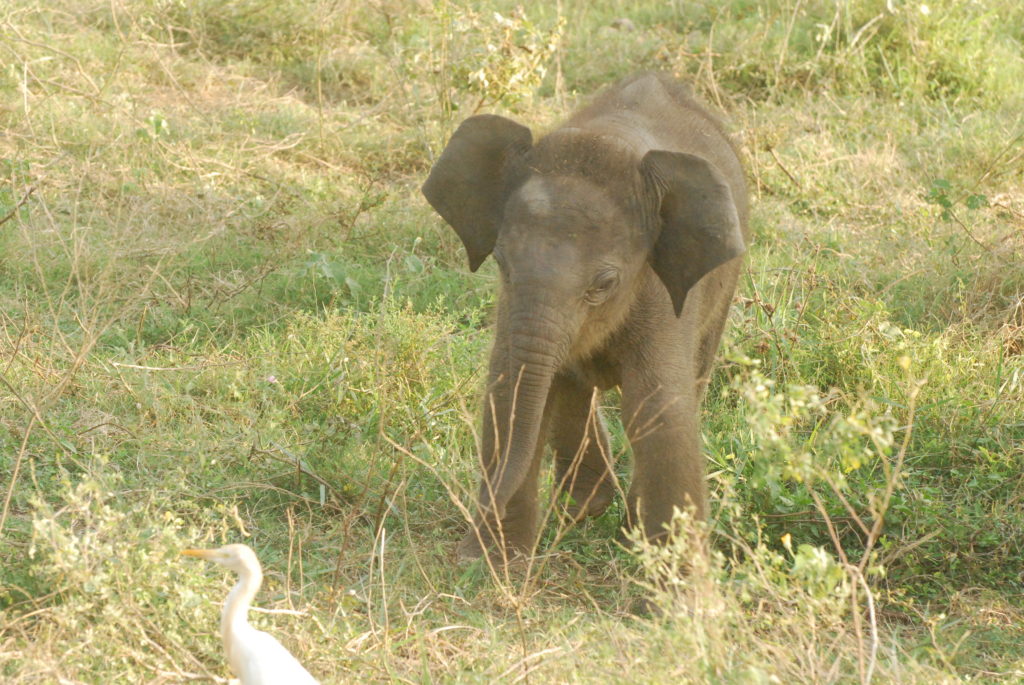
Expansion of rural subsistence agriculture along with resulting habitat loss are the biggest contributors to Human-Elephant Conflict (HEC), which is one of the largest environmental and socio-economic crisises facing communities in rural Sri Lanka. The conservation challenge is a result of agricultural land use practices that are incompatible with elephants’ habitat needs. Thereefore, the solution to mitigate HEC must be based on developing innovative land use strategies.
Project Orange Elephant (POE) is a crop diversification project that encourages farmers to cultivate oranges. Why? Feeding trials confirm that. elephants do not eat oranges. Because elephants don’t like oranges, orange crops are not susceptible to elephant raids thereby providing farmers with a sustainable supplementary income from the oranges. The result is that Sri Lankan farmers less hostile towards elephants thereby creating an environment of coexistence between the community and the elephants.
The POE strategy is to use the existing skill sets and resources of rural farmers who suffer frequent crop and property damage from elephants to create an alternative sustainable income source –orange crops. A further goal of the POE project is to create a new market-driven sustainable livelihood sthat will reduce human-elephant conflicts and provide farmers with a socio-economically stable primary income that is “elephant friendly”. The Sea of Change Foundation supports the POE project because it supports human-elephant coexistence, helps alleviate rural poverty, and supports the long term conservation of the endangered Sri Lankan elephants and their habitats.
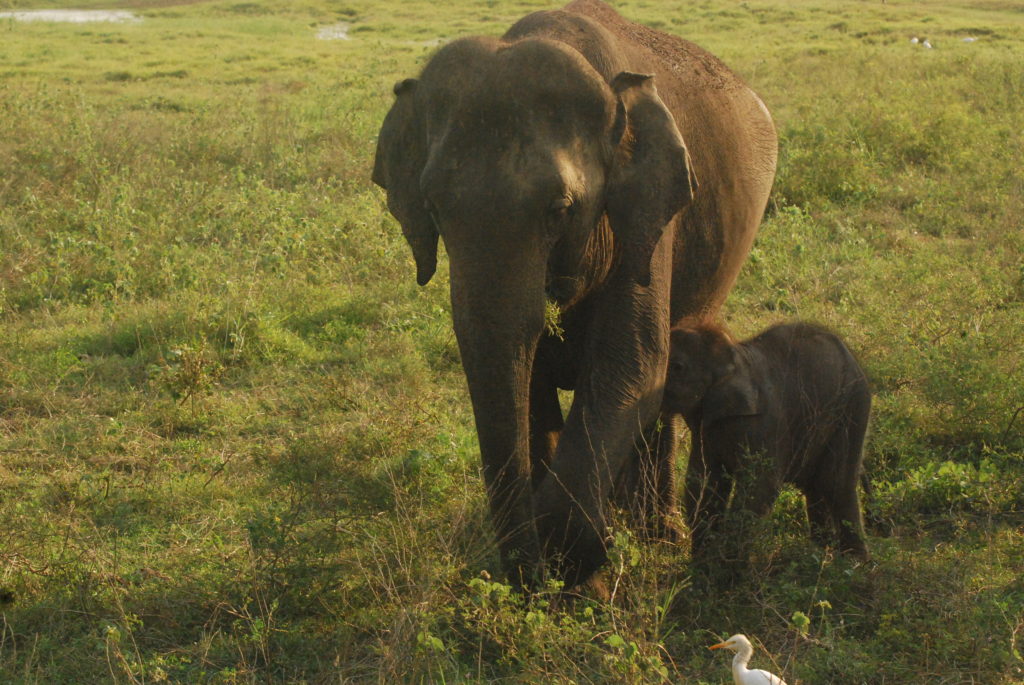
Why is protecting the Asian Elephant important? Historically, the Asian Elephant (Elephas maximus) was found throughout the Indian subcontinent and Southeast Asia, and they are the largest living land animal in Asia. On average, males are about 2.75 m (9.0 ft) tall and weighs about four tons, while females are smaller at about 2.4 m (7.9 ft) tall and weight about 2.7 tons. Elephants are crepuscular, meaning they are most active during dusk and dawn, and they are herbivorous — eat ing only plants. They need 80-200 liters of water a day and are never far for long from a fresh water source. Adult females travel in groups with their calves, while adult males travel alone or in bachelor groups. The species is slow to reproduce. The gestation period is 8-12 months and calves are weaned for up to three years, during which the mother will not breed often resulting in a four to the five-year birth interval. Both sexes reach adulthood and sexual reproduction around 17 years old and can live on average 60 years in the wild.
Compared to the African elephant, Asian elephants are smaller and have a flat or concave back as opposed to the arched back of their African relatives. They have a weaker social construct than African elephants but still exhibit a wide variety of sophisticated behaviors such as; compassion, grief, self-awareness, mimicry, play, memory, and the ability to use tools. They can also predict extreme weather events such as tsunamis by retreating to higher ground.
Despite their large size, intelligence and once expansive range, Asian elephants are currently listed as endangered on the IUCN Red List due to habitat loss and poaching for their ivory tusks. The ivory trade has become a catastrophic threat to all elephants with rampant poaching throughout much of Asia and Africa. In 1975, the international trade in Asian elephant ivory was banned when the Asian elephant was placed on Appendix One of the Convention on the International Trade in Endangered Species (CITES). By the late 1980s, it was believed that only around 50,000 remained in the wild. Sadly, today, in certain countries such as Thailand, the illegal ivory trade still flourishes and there has been a recent surge in killing elephants for their skins to sell on the black market.
Here at the Sea of Change Foundation, we are committed to be helping to mitigate some of the threats to elephant populations with our partners at the Sri Lanka Wildlife Conservation Society and their Project Orange Elephant. Stay tuned for more updates on our Facebook, Instagram, and website.
This Creature Feature is all about the beloved manatee, a large aquatic mammal that is part of the taxonomic order Sirenia. The word Sirenia comes from Greek mythology wherein the sailors who first discovered manatees mistook them for sirens or mermaids because of their long bodies and large tails.
Within the order Sirenia there are two taxonomic families, the Dugongidae which is comprised of only one species, Dugong dugon, and the Trichechidae which consists of three species of manatees: the Amazonian Manatee (Trichechus inunguis), the African Manatee (Trichechus senegalensis), and the West Indian Manatee (Trichechus manatus) which consists of two subspecies, the Antillean manatee and the Florida manatee.
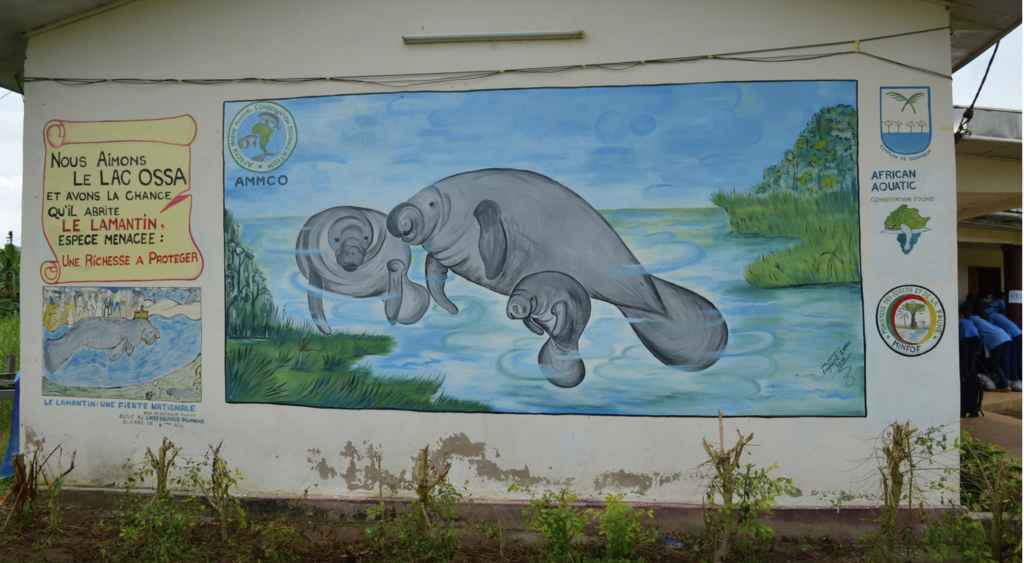
Manatees can grow up to 4m (13 ft) long and weigh as much as 590kg (1,300lb). They are sometimes referred to as “sea cows” because of their docile behavior and slow grazing on aquatic plants. Manatees are mainly herbivorous (plant-eating) creatures and their mouths are specially shaped with a split upper lip that allows them to move the left and right side independently for more efficient grazing. Manatees eat around 10-15% of their body mass daily in plants. They use their front flippers to help dig up plants and roots and to move the plants to their mouths. They also use their front flippers and large tails for swimming slowly at an average speed of 3-5mph but can reach speeds of 20mph in short bursts, usually as flight response from danger or during a mating herd formation. They are usually observed grazing, resting on the bottom, or nursing their young. As mammals, they must surface to breathe about every five minutes but can hold their breath up to 20 minutes especially while resting. Additionally, manatees have live birth after a gestation period of about one year, after which a calf is dependent on their mother for 1-2years. Manatees reach sexual maturity at about five years of age making their reproductive rate relatively slow.
Manatees face many threats such as cold stress, boat strikes, poaching, and diseases, with the greatest threats being human-caused. The most frequent threat to the West Indian manatee is boat collisions and disease from toxic algae blooms, followed by ingestion and entanglement with fishing hooks, monofilament, ghost nets, and crab trap lines. Globally, habitat degradation due to diminishing seagrass beds and coastal development is also an ever-present threat to manatees. The African manatee’s largest threat stems from accidental capture as bycatch in fishing nets and poaching. All three species of manatees are listed as vulnerable on the IUNC Red List of Threatened and Endangered Species.
The Sea of Change Foundation supports manatee research and conservation in partnership with the African Marine Mammal Conservation Organization (AMMCO) in Cameroon, central Africa. With the Sea of Change Foundation’s support, AMMCO is improving local knowledge and awareness about the African manatee and other aquatic megafauna in Cameroon. The project trains fisherman and law enforcement in the area of Lake Ossa and the Northern Coast of Cameroon to document any sightings of manatees and take special note of manatee mortality. A public outreach campaign to educate the local community about plastic waste and the importance of protecting manatees is also part of AMMCO’s conservation project. You can learn more about and help support the Sea of Change Foundation’s work in conservation around the world, here.
Welcome to another Creature Feature, where we introduce you to a new and fascinating animal. Today we’re learning about red lionfish (Pterois volitans). These fish can be identified from their red, white, and black stripes that serve as a warning coloration to other animals about their venomous spines. A puncture from the spines along their dorsal and pectoral fins that can cause extreme pain to humans and even death in marine animals. Lionfish belong to the family Scorpianidae which includes hundreds of species of fish that all have sharp spines that secrete venomous mucus.
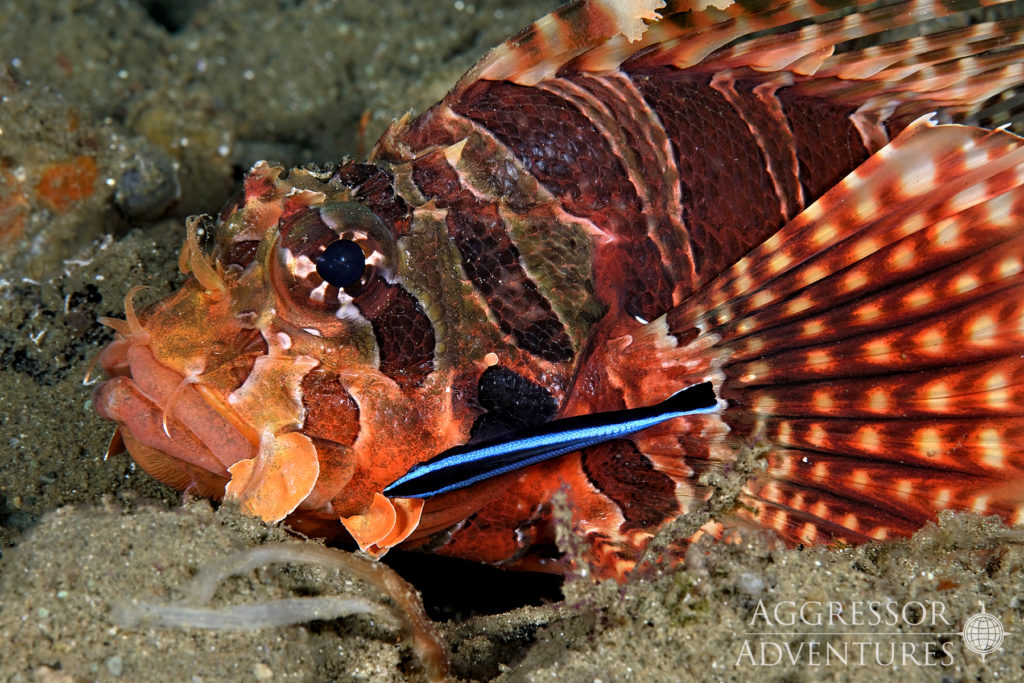
Lionfish are native to the indo-pacific region but have found their way into the Caribbean and along the east coast of the United States, becoming a problematic invasive species. An invasive species is one that is not native to a specific ecosystem and has a tendency to spread to a degree believed to cause damage to the environment or our human economy and health. How can one fish cause so many problems? First, lionfish have an extremely high fecundity rate, meaning they reproduce often and in large quantities. Lionfish reach sexual maturity after just one year, and one female lionfish can produce two egg sacks every four days with each egg sack containing up to 15,000 eggs. The result can be two million eggs per female per year. These egg sacks can also float along the surface of the water for hundreds of miles, dependent on currents, increasing the geographic reach and range of the lionfish invasion in the Atlantic. Not all eggs survive, and not all juveniles mature to adulthood. But the ones that do can grow up to 47 cm (18.5 in) in length! As adults, these fish eat any other fish that they can fit in their mouths and can eat up to 90% of their body weight every day. Lionfish have also been found in mangrove systems, which act as a nursery for the young of many coral reef fishes, including economically important species such as groupers and snappers.
Secondly, lionfish have no natural predators in the Atlantic Ocean, making them virtually indestructible. However, there is hope with humans as the predators. As lionfish took over dive sites and became more noticeable, divers discovered they could spear a lionfish quite easily, as they do not swim away from divers. Today, a small sling spear is the most popular form of harvesting lionfish at collecting derbies across the Caribbean, Bahamas, and Florida. Soon, the culinary world took note of the new opportunity and found that lionfish is a white, flaky, delicate fish excellent for gourmet dishes. Because it is invasive in the Atlantic, it is one of the most sustainable seafood choices for consumers.
Our coral reefs are complex systems, where each species has a specific role to play. Just as lionfish are important to a stable reef system in their native Indo-Pacific oceans, newly introduced species have the potential to wreak havoc when introduced to a new ecosystem. One of our priorities here at Sea of Change Foundation is to work on the conservation and resilience of reef ecosystems, and we encourage divers in the Atlantic to participate in their local lionfish derby and stay up-to-date with regulations and policies on how to prevent the spread of invasive species.

